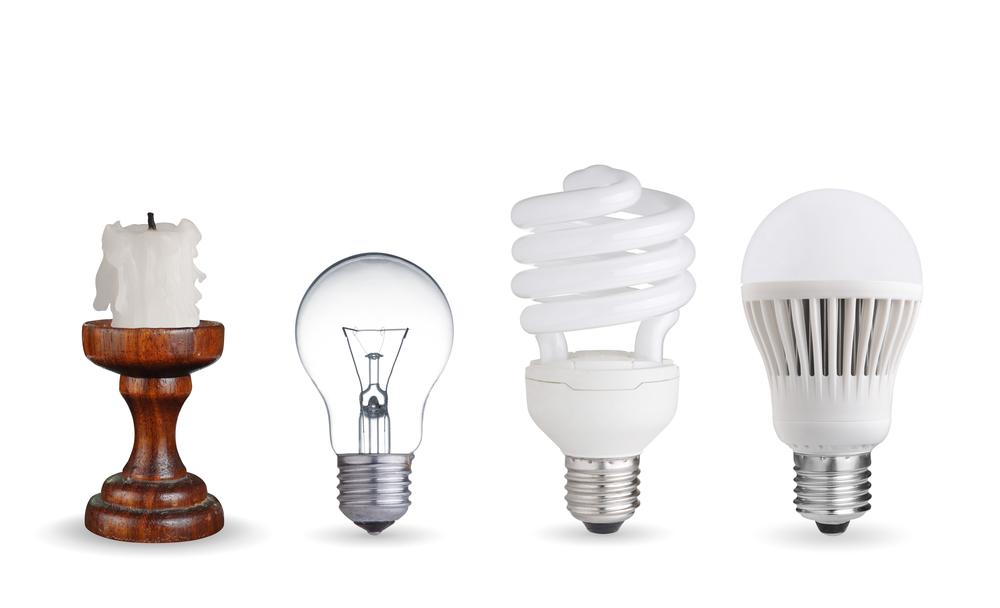Switch to LEDs
Did you know, LED bulbs shine just as bright as incandescent bulbs, but they use 75% less energy and last 10 to 25 times longer? Lighting has evolved! In fact, they are so much cheaper and more efficient that incandescent lights are being phased out. Replacing just 5 incandescent light bulbs with LEDs can save enough energy to pay for a nice dinner out every year. LEDs are also cheaper and longer lasting than compact fluorescent lightbulbs (CFLs).
Your Impact
Action Steps & Tips
Introduction

Lighting has evolved! LED bulbs shine just as bright as incandescent bulbs, but they use 75% less energy and last 10 to 25 times longer. They are so much cheaper and more efficient that incandescent lights are being phased out. LEDs are also cheaper and longer lasting than compact fluorescent lightbulbs (CFLs).
Switching to LEDs:
-
Saves energy and money
-
Saves time because LEDs last much longer
-
Reduces climate and air pollution
1Tips for choosing the right LED bulb
First, make a list. Think about each area you will be lighting, and what types of bulb you will need.
- Do you need a bright light for a home office, or a softer light for a family room?
- Does the bulb need to work with a dimmer?
- Do you need a special size, like a globe or recessed ceiling light?
Brightness. LED brightness is measured in lumens, however they usually have a “Watt Equivalent” label like the incandescent rating we are used to. Use 40-watt equivalent bulbs for lower light needs, 60-watt for average uses and 75 or 100-watt for high lighting requirements — like the kitchen or a working space. A typical 60 watt equivalent LED uses around 800 lumens.
Light color. LEDs also come in multiple colors for different uses and environments.
- Bright white or cool white: Great for daytime use in work areas like your home office or kitchen.
- Soft white: Best for spaces that you mostly use in the evening, or where you prefer lower light or a calming, more relaxing environment.
- Colors: Some LED bulbs can change colors. With a smart light controller, you can change the color from your phone! Check out the Smart Lighting action for more info.
Size, shape and dimmers. LEDs fit most standard light fixtures including options for dimmer switches. However, some older fixtures and switches may not be compatible. If you add an LED to a fixture with a dimmer switch and it starts blinking, flickering, humming or is not dimming properly, it is likely not compatible. Consider installing an LED compatible dimmer switch.
Change your bulbs and save. Replace your incandescent bulbs now and save right away. If you have CFLs, wait until they stop working to replace them.
Then relax and forget about it! These long-lasting bulbs won’t need to be changed for a long time.
If you are replacing CFLs, check with your local hazardous waste program and dispose of them properly. CFLs contain mercury and are not safe to go in your regular trash container.

